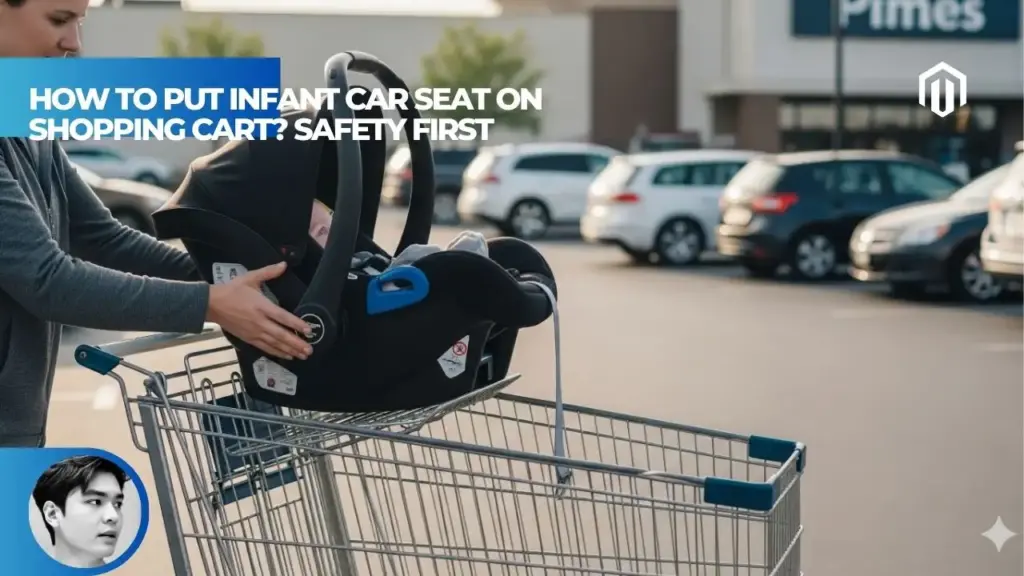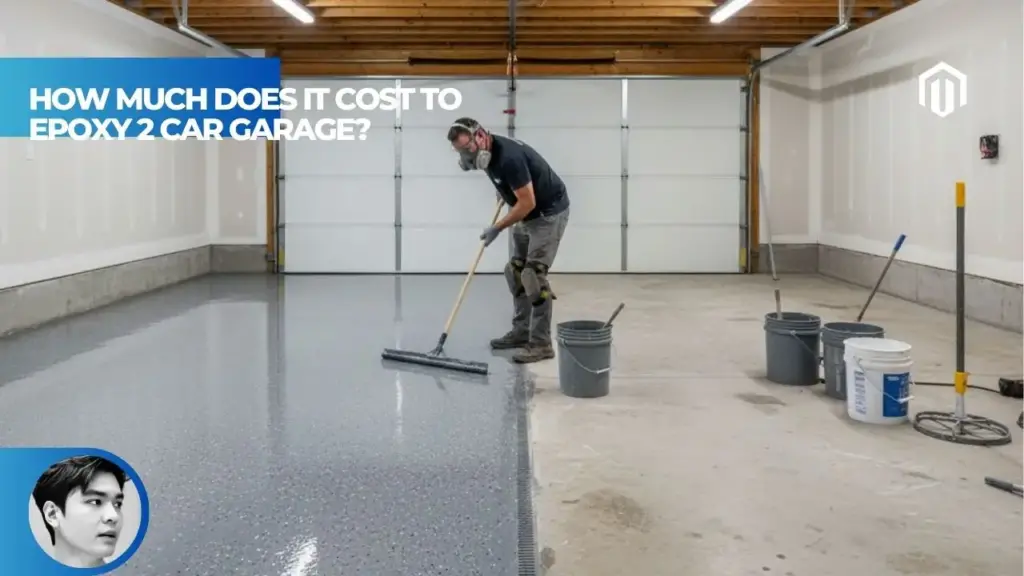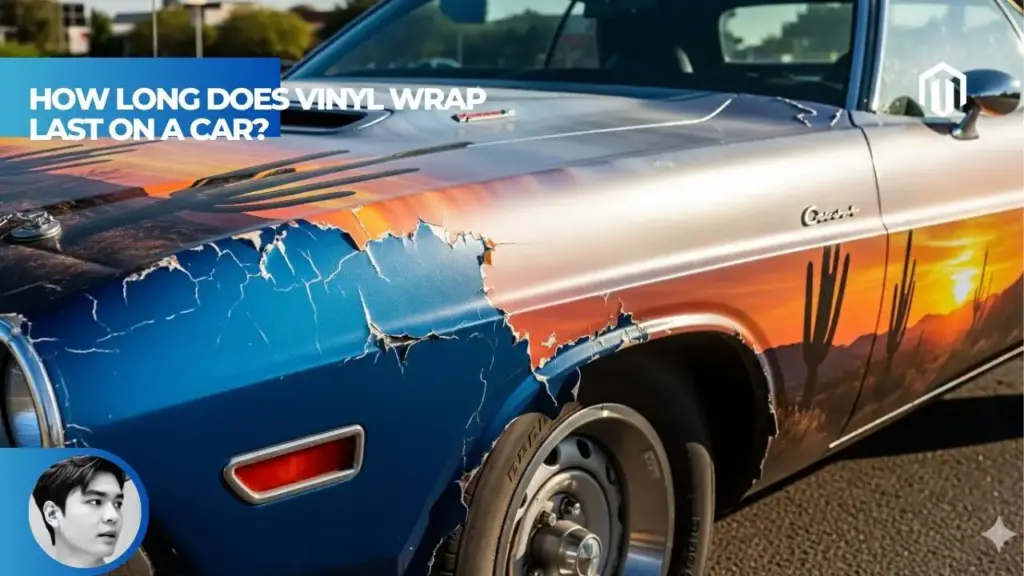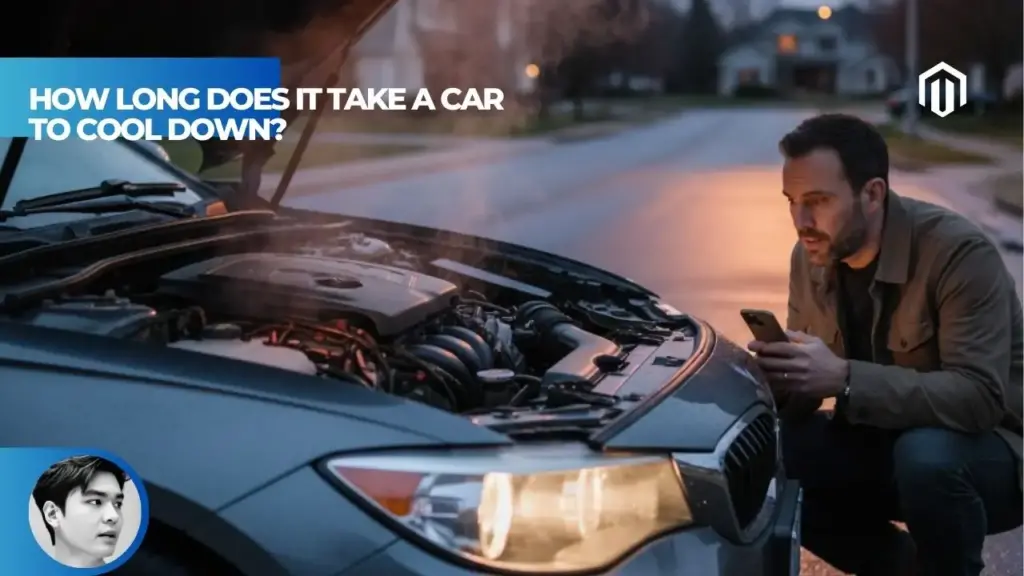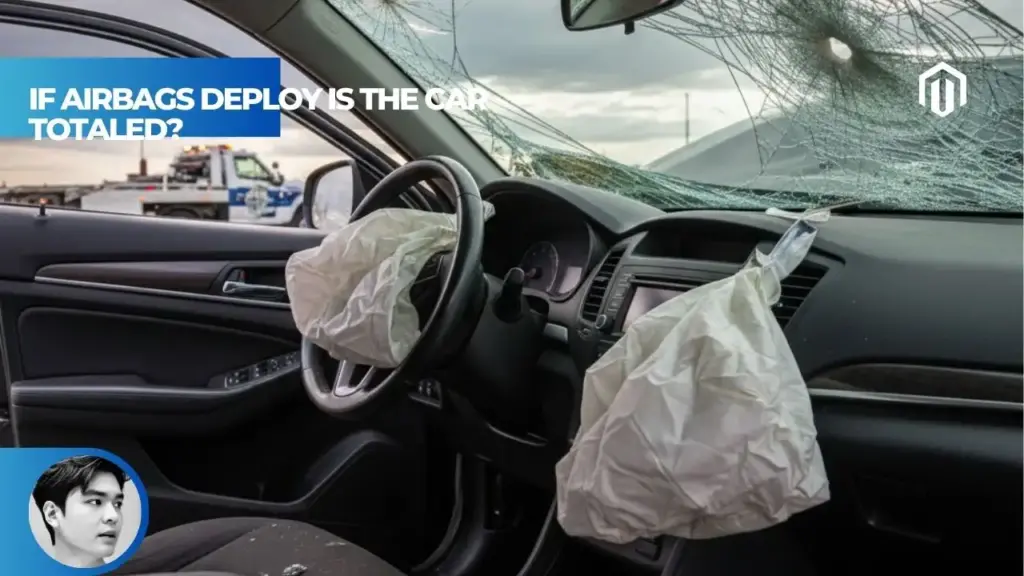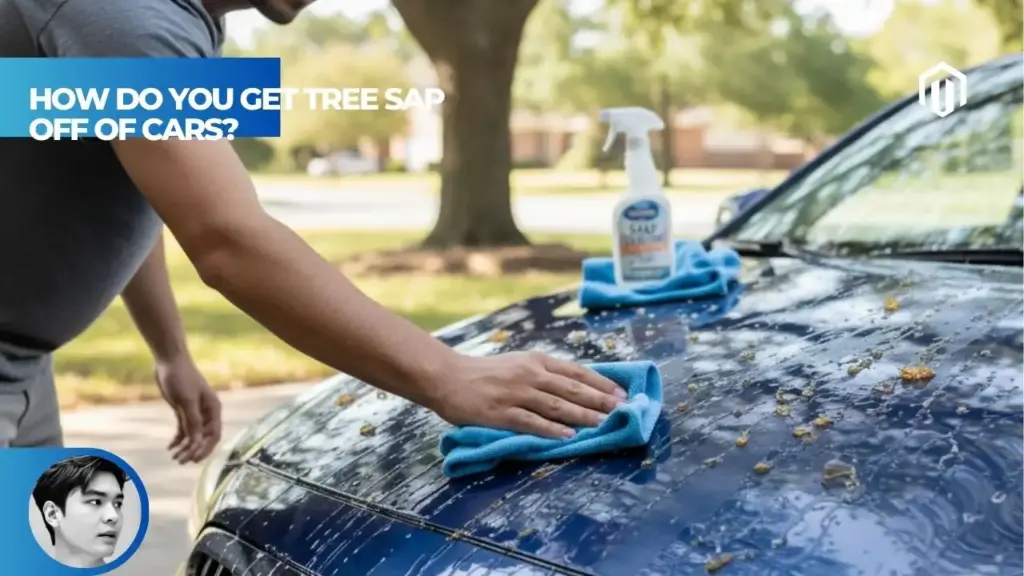You may also like:
- 【Explained】When Does the 2-Hour Car Seat Rule End for Babies?
- 【Explained】Where Is the Expiration Date on a Car Seat?
- 【Explained】When to Take Newborn Insert Out of Car Seat? (The Manufacturer’s Manual is Key)
- 【Explained】Can You Jump Start a Car in the Rain? (A Step-by-Step Guide)
- 【Review】Top 7 Best Ways to Clean a Car After a Body Repair
Do NOT put infant car seats on shopping carts – this practice is explicitly prohibited by all major car seat manufacturers and has led to serious injuries and deaths[1]. The Consumer Product Safety Commission reports that over 21,000 children under age 5 require emergency room treatment annually from shopping cart-related injuries, with infant car seat falls contributing significantly to these statistics[2].
Every major manufacturer including Graco, Chicco, and Britax specifically states “NEVER place carrier on shopping carts” in their instruction manuals. The seemingly secure “clicking” sound creates false security – car seats are designed only for vehicle bases, not shopping cart connections[1].
Instead, place the car seat securely inside the shopping cart basket, use baby carriers for hands-free shopping, or consider specialty cart solutions designed for infant safety. A tragic 2011 incident where an infant died after their car seat fell from a shopping cart led to mandatory warning labels on all shopping carts starting in 2012[3].
The safest approach prioritizes your baby’s security over convenience, ensuring every shopping trip ends with everyone safely back home.
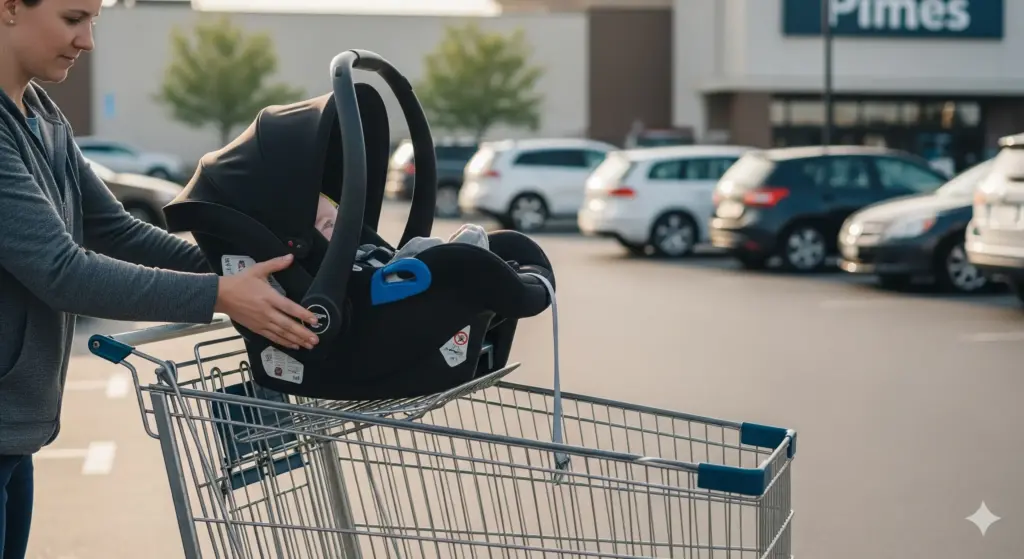
Critical Safety Warning About Car Seats on Shopping Carts
Why This Practice Is Dangerous
Car seat manufacturers unanimously oppose placing infant carriers on shopping carts due to fundamental design incompatibilities and serious safety risks. The practice creates a dangerously unstable configuration that has resulted in thousands of preventable injuries[1].
Major manufacturer warnings by brand:
| Manufacturer | Exact Warning Language | Manual Location |
|---|---|---|
| Graco | “NEVER place carrier on top of shopping carts” | Safety warnings section |
| Chicco | “DO NOT place carrier on shopping cart” | Installation instructions |
| Britax | “Never place the carrier on shopping carts” | Important safety information |
| UPPAbaby | “Never use infant car seat on shopping carts” | Product safety guidelines |
- Top-heavy instability occurs when car seats are placed on shopping cart tops, raising the center of gravity to dangerous levels. Shopping carts already have inherent stability issues, and adding a car seat creates a precarious tower that can tip with minimal force or sudden movement.
- False security from clicking sounds misleads parents into believing their car seat is securely attached. These sounds result from plastic components making contact, not from actual mechanical connection designed for safety. Car seats are engineered specifically for vehicle base attachment systems, not shopping cart interfaces.
- Weight distribution problems affect cart maneuverability and increase tipping risks. A typical infant car seat with baby weighs 15-25 pounds positioned high above the cart’s designed weight distribution, making normal shopping movements potentially hazardous.
Legal and Warranty Implications
Using car seats on shopping carts violates manufacturer warranties and creates complex liability issues for parents and retailers. Understanding these legal ramifications helps parents make informed decisions about shopping practices[4].
- Warranty voidance occurs immediately when car seats are used contrary to manufacturer instructions. All major brands explicitly state that non-approved usage voids warranty coverage, leaving parents financially responsible for any resulting damage or safety compromise.
- Store liability policies vary significantly by retailer, but most establishments post warnings against car seat placement on carts to limit their legal exposure. Some stores have implemented specific policies prohibiting this practice and may request customers comply with safety guidelines.
- Insurance coverage complications may arise when injuries occur during prohibited usage. Personal injury claims could face challenges if the injured party was engaged in activities explicitly warned against by manufacturers and safety organizations.
- Legal responsibility considerations extend beyond immediate safety to potential negligence claims if injuries occur to other shoppers or children due to cart tip-overs caused by improper car seat placement.
Real Injury Cases and Statistics
Shopping cart-related injuries represent a significant child safety crisis, with infant car seat incidents forming a particularly dangerous subset of these accidents. Statistical analysis reveals the scope and severity of this preventable problem[2].
Injury statistics breakdown:
| Time Period | Total Injuries | Fatal Incidents | Primary Injury Type |
|---|---|---|---|
| 1990-2011 | 530,000+ children | Multiple fatalities | Head trauma (85%) |
| Annual average | 21,000-24,000 cases | 1-2 deaths per year | Falls (70.4%) |
| 2011 peak | 23,300 documented | 1 infant death | Concussions (5,000) |
- The 2011 fatal incident involved a 3-month-old infant whose car seat fell from a shopping cart when the cart rolled over a speed bump in a grocery store parking lot. This tragedy prompted industry-wide changes including mandatory warning labels on all shopping carts starting in January 2012[3].
- Head trauma dominance in injury patterns reflects the vulnerability of children’s developing skulls and the height from which they fall when car seats tip or detach from carts. Emergency room data shows that grocery store floor impacts cause severe injuries due to hard surfaces and lack of cushioning.
- One child injured every 22 minutes represents the frequency of shopping cart-related emergency room visits, highlighting the widespread nature of this problem across American communities. These statistics exclude minor injuries treated at home or by primary care physicians.
Safe Alternatives for Shopping with Infant Car Seats
Placing Car Seat Inside Shopping Cart Basket
The safest method for transporting infants during shopping involves placing the car seat securely within the main cart basket rather than on top. This approach maintains stability while allowing necessary grocery shopping[5].
Proper positioning techniques for maximum stability:
- Center the car seat in the deepest part of the basket
- Face the carrier handle toward the front for easy monitoring
- Ensure the base sits completely flat against the basket floor
- Check that the carrier doesn’t rock or shift when gently tested
- Maintain at least 2 inches clearance from basket edges
Essential safety protocols during shopping:
| Safety Requirement | Implementation | Monitoring Frequency |
|---|---|---|
| Full harness use | Keep baby fully buckled at all times | Continuous |
| Visual contact | Position for clear sight lines to baby | Every 30 seconds |
| Stability checks | Test car seat position before moving | Each aisle change |
| Temperature monitoring | Watch for overheating in stores | Every 10 minutes |
- Weight distribution considerations require careful grocery loading around the car seat. Place heavier items like milk and canned goods in the lower cart area or underneath basket to maintain optimal balance. Avoid stacking items on or around the car seat that could shift and create pressure points.
- Space limitation strategies include planning shorter shopping trips, using online grocery ordering for bulk items, or employing two-cart systems for larger shopping needs. Many parents find this method works well for quick trips but requires adjustment for major grocery runs.
Baby Wearing Options During Shopping
Baby carriers provide hands-free shopping solutions while maintaining constant physical contact with infants. This approach eliminates cart-related risks while enabling efficient grocery shopping for families[6].
Carrier type comparison for grocery shopping:
| Carrier Style | Age Range | Weight Limit | Shopping Comfort | Price Range |
|---|---|---|---|---|
| Structured carriers | 3-36 months | 45 lbs | Excellent back support | $150-300 |
| Wrap carriers | Newborn-35 lbs | 35 lbs | Good for shorter trips | $50-150 |
| Ring slings | Newborn-35 lbs | 35 lbs | Quick up/down access | $60-120 |
| Soft structured | 6-36 months | 40 lbs | Best for extended shopping | $100-250 |
- Benefits of baby wearing during shopping include constant temperature regulation, immediate comfort for fussy babies, reduced risk of illness exposure compared to cart surfaces, and improved parent-child bonding during errands. Many parents report babies sleep better in carriers than car seats during shopping trips.
- Comfort considerations for extended shopping involve proper carrier adjustment, wearing appropriate clothing for extra body heat, and taking breaks for both parent and baby comfort. How long does it take to buy a car varies significantly, but grocery shopping with carriers typically works well for trips under 90 minutes.
- Age and weight restrictions vary by carrier manufacturer but generally accommodate newborns through toddlerhood. Consult specific carrier instructions for weight limits and proper fit guidance to ensure safe usage throughout your baby’s development.
Specialty Shopping Solutions and Products
Innovative products designed specifically for shopping with infants provide intermediate solutions between cart placement and baby wearing. These options address safety concerns while maintaining shopping convenience[5].
Shopping cart hammocks and tested products:
- Binxy Baby Shopping Cart Hammock – Attaches to cart sides, cradles car seat in basket area
- Skip Hop Take Cover Shopping Cart Cover – Provides clean surface and some security
- Infantino Compact 2-in-1 – Convertible cart cover with infant positioning system
- Balboa Baby Shopping Cart Cover – Machine washable with toy attachment loops
Two-cart system benefits for larger families include dedicating one cart entirely to the baby’s car seat while using the second cart for groceries. This approach works well for families with multiple children or extensive shopping needs, though it requires coordination and store cooperation.
Store-specific cart options vary by retailer, with some offering carts designed with infant-friendly features. Target’s newer cart designs include lower infant areas, while some Whole Foods locations offer carts with built-in infant seats meeting current safety standards.
Timing strategies around baby’s schedule optimize shopping success regardless of transport method. Shopping during baby’s natural sleep times, immediately after feeding, or during typical calm periods reduces stress for both parent and child while enabling safer transport options.
Brand-Specific Safety Guidelines and Warnings
Major Car Seat Manufacturer Policies
Every leading car seat manufacturer maintains explicit policies prohibiting shopping cart usage, developed through safety testing and incident analysis. These policies represent industry consensus on this critical safety issue[1].
Comprehensive manufacturer policy overview:
| Brand | Policy Statement | Enforcement | Warranty Impact |
|---|---|---|---|
| Graco | “NEVER place carrier on shopping carts” | Manual warnings, labels | Voids warranty |
| Chicco | “DO NOT place carrier on shopping cart” | Bold text warnings | Immediate voidance |
| Britax | “Never place carrier on shopping carts” | Multi-language warnings | Full warranty loss |
| Evenflo | “Prohibited for shopping cart use” | Safety section emphasis | Coverage terminated |
| UPPAbaby | “Never use on shopping carts” | Digital and print warnings | Warranty nullified |
- Graco’s specific safety stance includes detailed explanations in their instruction manuals about why shopping cart usage creates unacceptable risks. The company has issued multiple safety communications reinforcing this position following continued consumer attempts to use carriers on carts.
- Chicco’s international consistency maintains the same prohibition across all markets, indicating this isn’t merely a liability-driven U.S. policy but a fundamental safety determination based on product engineering and physics.
- Britax engineering analysis contributed to industry understanding of why car seats and shopping carts create inherently unsafe combinations. Their research demonstrated that even apparent “secure” attachments fail under normal shopping conditions.
Aftermarket Products and Attachments
Third-party products marketed to enable car seat and shopping cart combinations lack manufacturer approval and create additional safety risks. Understanding why these products remain problematic helps parents make informed decisions[7].
Why aftermarket attachments void warranties:
- No car seat manufacturer testing or approval of third-party connection systems
- Altered force distribution through the car seat structure during impacts or stress
- Unknown material compatibility between different plastic compounds and metals
- Liability transfer from original manufacturer to aftermarket product company
- Safety standard non-compliance with CPSC and ASTM requirements
SafeDock and similar systems market themselves as solutions to shopping cart safety but fail to address fundamental physics problems. These products may actually increase danger by providing false confidence while maintaining the inherent instability of elevated car seat placement.
Unregulated product risks include lack of safety testing, absence of recall mechanisms, and limited quality control compared to federally regulated car seats. Parents using these products assume full liability for any resulting injuries or damages.
LullaBelay and hanging systems represent particularly dangerous approaches that suspend car seats from shopping cart handles or frames. These systems concentrate all weight and force on single connection points never designed for such loads, creating extreme failure risks.
Store Policies and Cart Modifications
Retail establishments have implemented various policies and cart modifications to address shopping cart safety concerns while accommodating customer needs. Understanding store-specific approaches helps parents plan safer shopping strategies[8].
Major retailer policies and modifications:
| Store Chain | Cart Modifications | Policy Enforcement | Staff Training |
|---|---|---|---|
| Target | Lower infant areas, stability improvements | Verbal warnings to customers | Basic safety awareness |
| Walmart | Standard ASTM compliance, warning labels | Posted signage only | Minimal intervention |
| Meijer | Some locations with car seat docks | Inconsistent enforcement | Variable by location |
| Whole Foods | Infant-friendly cart designs | Active safety promotion | Enhanced staff education |
- Meijer’s car seat dock systems exist in limited locations but don’t eliminate safety concerns. These built-in systems still elevate car seats above optimal stability points and may not accommodate all car seat models safely.
- Regional variations in store cart designs reflect different liability concerns and local incident histories. Stores in areas with higher injury rates often implement more aggressive safety measures and staff intervention policies.
- When to request store assistance includes situations where standard carts appear damaged, safety restraints are missing, or alternative cart options might be available. Most stores accommodate reasonable safety requests when approached professionally by concerned parents.
Modern automotive safety considerations extend beyond shopping to vehicle selection, as highlighted by Autvex’s comprehensive analysis of where is the expiration date on a car seat and related child safety equipment timing.
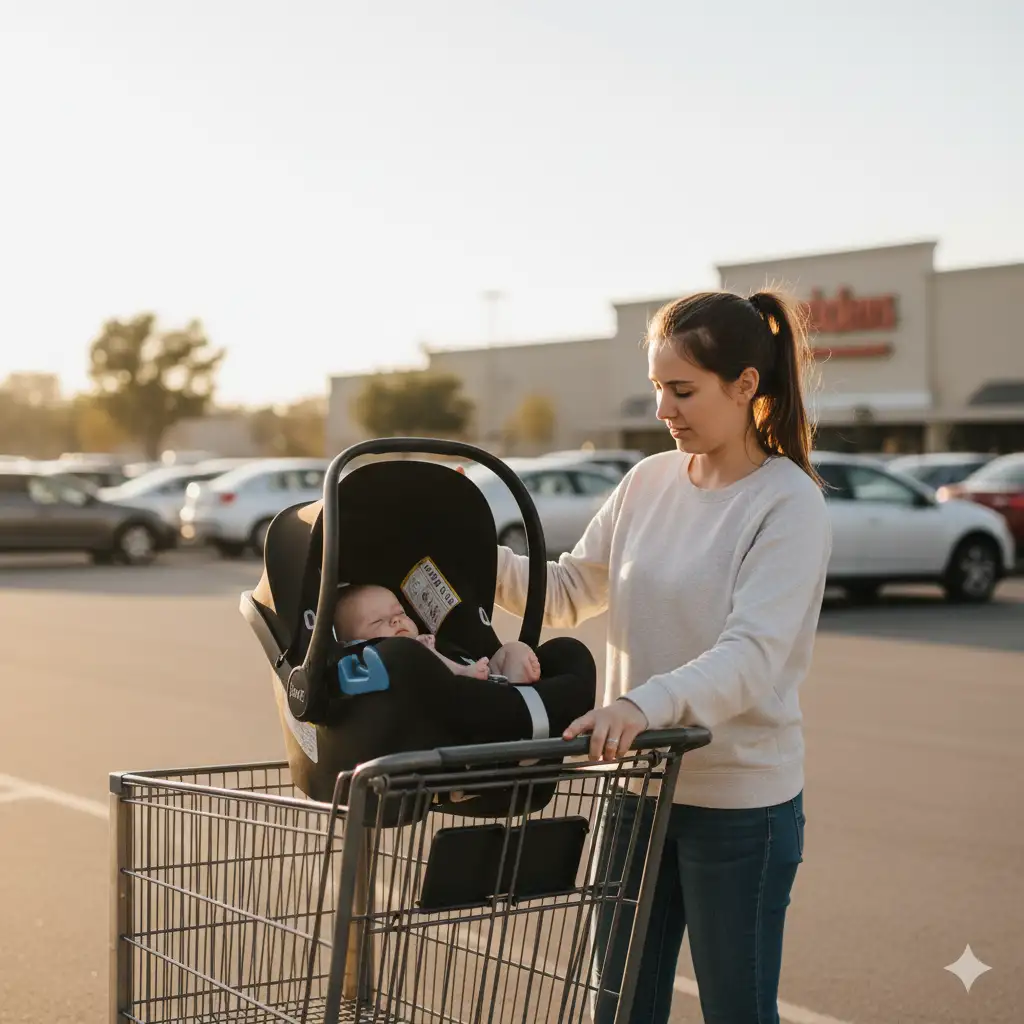
Proper Car Seat Safety Outside Vehicle Use
Time Limitations for Car Seat Use
Extended car seat usage outside vehicles creates health risks that parents must understand and manage. Infant car seats are designed for specific angles and durations that may not be maintained during shopping or other activities[9].
Positional asphyxiation risks occur when infants remain in car seats at improper angles for extended periods. The semi-reclined position necessary for vehicle safety may compress airways when the seat isn’t positioned on its vehicle base at the correct angle.
Recommended time limits for out-of-vehicle use:
| Age Group | Maximum Continuous Time | Total Daily Limit | Warning Signs |
|---|---|---|---|
| Newborn-2 months | 30 minutes | 2 hours | Labored breathing, color changes |
| 2-4 months | 45 minutes | 3 hours | Restlessness, difficulty feeding |
| 4-6 months | 60 minutes | 4 hours | Slouching, head dropping forward |
| 6+ months | 90 minutes | 5 hours | Discomfort, resistance to carrier |
- Signs of breathing difficulty include changes in skin color (particularly around lips), unusual quietness or fussiness, rapid or shallow breathing, and difficulty maintaining normal feeding patterns after car seat use. Parents should immediately remove babies from car seats if any concerning symptoms appear.
- Shopping trip planning should account for these time limitations by scheduling shorter outings, planning routes to minimize time in stores, and preparing to remove babies from car seats for comfort breaks during longer trips.
Correct Harness and Safety Protocols
Maintaining proper car seat harness configuration during non-vehicle use ensures infant safety while accommodating shopping and errand activities. Different situations may require harness adjustments while maintaining essential safety standards[10].
Essential harness requirements for shopping:
- Chest clip positioning at armpit level regardless of activity
- Harness strap tightness allowing only one finger under straps at shoulders
- No blankets or coats under harness straps that could compress in impact
- Regular tension checks every 15-20 minutes during extended outings
- Proper recline angle when possible to maintain airway alignment
Temperature considerations in stores versus outdoor environments require monitoring for overheating or cooling. Store heating systems and seasonal clothing changes affect infant comfort and safety in car seats during shopping trips.
Safety check frequency should increase during shopping activities due to cart movement, loading/unloading activities, and changes in positioning that may affect harness alignment or car seat stability.
Age and Development Considerations
Child development milestones significantly impact safe shopping strategies and car seat usage patterns. Understanding when to transition between different safety approaches helps parents adapt to changing needs[11].
Developmental transition timeline:
| Age Range | Recommended Transport | Safety Considerations | Alternative Options |
|---|---|---|---|
| 0-4 months | Car seat in basket or baby wearing | Limited neck control, breathing concerns | Carrier preferred for extended trips |
| 4-8 months | Transition period, multiple options | Increasing awareness, grabbing ability | Short cart rides with supervision |
| 8-12 months | Cart child seat appropriate | Sitting independently, curiosity peaks | Standard cart safety restraints |
| 12+ months | Walking, cart alternatives | Mobility increases, safety compliance decreases | Combination approaches needed |
- When babies outgrow safe cart transport varies by individual development but generally occurs when children consistently attempt to climb out of restraints, exceed weight limits for carrying options, or demonstrate strong preferences for independent movement.
- Planning for active toddler challenges requires different strategies including shorter shopping trips, entertainment during cart rides, and backup plans for when cooperation fails. Many parents find that involving toddlers in age-appropriate shopping tasks reduces resistance to safety measures.
Understanding proper safety transitions parallels the importance of vehicle safety planning, much like considering if airbags deploy is the car totaled when evaluating overall family transportation safety strategies.
Emergency Response and What to Do If Accidents Occur
Immediate Response to Cart Tip-Overs
Shopping cart accidents require immediate, appropriate responses to minimize injury severity and ensure proper medical evaluation. Understanding emergency protocols helps parents respond effectively during stressful situations[12].
Immediate response priorities for cart accidents:
- Secure the scene – Stop cart movement and clear surrounding hazards
- Assess consciousness – Check if child is responsive without moving them
- Control bleeding – Apply direct pressure to any visible wounds
- Stabilize head/neck – Avoid moving child if head/neck injury suspected
- Call for help – Contact emergency services for serious injuries
- Document incident – Note circumstances while details are fresh
First aid priorities for head and neck injuries focus on preventing further damage while ensuring airway clearance. Never move a child who may have spinal injuries unless immediate life-threatening conditions require repositioning for breathing.
When to call emergency services versus urgent care depends on injury severity and child responsiveness. Call 911 for unconsciousness, suspected head trauma, visible deformities, or severe bleeding. Urgent care may suffice for minor cuts, bruises, or when child remains alert and responsive.
Store notification requirements vary by location but generally include reporting serious injuries to management for insurance and liability documentation. Request store incident reports and obtain copies for your records.
Recognizing Signs of Serious Injury
Head injuries in infants and toddlers present differently than adult injuries, requiring specialized knowledge to identify concerning symptoms. Early recognition of serious injury enables appropriate medical intervention[13].
Concussion symptoms in infants and toddlers:
| Immediate Signs | Delayed Signs (24-48 hours) | Emergency Indicators |
|---|---|---|
| Loss of consciousness | Persistent vomiting | Seizures |
| Crying inconsolably | Changes in sleep patterns | Weakness in limbs |
| Refusing to eat/drink | Increased irritability | Pupils different sizes |
| Appearing dazed | Loss of developmental skills | Fluid from ears/nose |
- When loss of consciousness requires immediate emergency care includes any period of unresponsiveness, even brief moments. Emergency medical evaluation becomes essential when children cannot be roused normally or demonstrate altered consciousness levels.
- Monitoring for delayed symptoms continues for 48-72 hours following any head impact. Parents should maintain detailed logs of child behavior, feeding patterns, sleep quality, and any concerning changes that develop after the initial incident.
- Follow-up medical care recommendations typically include pediatrician consultation within 24 hours of significant head impacts, regardless of immediate symptoms. Some injuries manifest gradually, making professional medical assessment crucial for proper diagnosis.
Prevention Through Risk Assessment
Proactive risk assessment prevents many shopping cart accidents by identifying and avoiding dangerous situations before they develop. Developing systematic safety evaluation skills protects families during routine activities[14].
Cart condition evaluation checklist:
- Wheel functionality – All wheels rotate freely and brake properly
- Structural integrity – No loose bolts, cracked plastic, or bent metal
- Safety restraint condition – Buckles function, straps show no wear
- Handle security – No loose or wobbly handle connections
- Basket damage – No sharp edges, holes, or protruding elements
High-risk shopping environment identification includes crowded stores with narrow aisles, locations with damaged carts, busy periods with reduced staff attention, and stores lacking proper cart maintenance programs.
Personal safety equipment for shopping trips may include hand sanitizer for cart cleaning, small blankets for infant comfort, and emergency contact information readily accessible. Some parents carry basic first aid supplies during outings with young children.
Teaching older children cart safety involves explaining proper behavior around shopping carts, demonstrating safe assistance techniques, and establishing clear rules about cart interaction that protect both themselves and younger siblings.
Long-Term Shopping Strategy Planning
Age-Appropriate Shopping Methods
Successful family shopping requires adapting strategies as children grow and develop different needs and capabilities. Long-term planning enables smooth transitions between safety approaches[15].
Newborn to 6 months transport strategy:
| Method | Pros | Cons | Best Situations |
|---|---|---|---|
| Car seat in basket | Familiar environment, easy monitoring | Limited shopping space | Quick trips, small lists |
| Baby wearing | Hands-free, constant contact | Parent fatigue, weight limits | Extended shopping, multiple stops |
| Stroller system | Extra storage, weather protection | Store navigation challenges | Large shopping trips |
| Two-person shopping | One adult per child focus | Requires coordination | Complex shopping needs |
- 6-12 months transitional strategies accommodate increasing mobility and awareness while maintaining safety priorities. This period often requires combination approaches based on child’s mood, shopping duration, and store layout.
- Toddler shopping guidelines emphasize engagement and cooperation rather than containment. Successful strategies include involving children in age-appropriate shopping tasks, maintaining consistent routine expectations, and planning for shorter attention spans.
- Family logistics with multiple children requires advanced planning including backup transportation methods, entertainment strategies, and clear division of supervisory responsibilities between adults when possible.
Equipment Investment and Cost Analysis
Strategic equipment investment optimizes safety and convenience while managing family budgets effectively. Understanding long-term costs and benefits guides smart purchasing decisions[16].
Cost-benefit analysis for baby gear investment:
| Equipment Category | Initial Cost | Usage Duration | Cost Per Month | Safety Value |
|---|---|---|---|---|
| Quality baby carrier | $150-300 | 24-36 months | $4-12 | High |
| Shopping cart accessories | $30-80 | 12-18 months | $2-7 | Moderate |
| Stroller travel system | $200-600 | 36-48 months | $4-17 | High |
| Multiple safety solutions | $100-200 | 18-24 months | $4-11 | Very High |
- Long-term equipment planning considers family growth, activity patterns, and changing transportation needs. Investing in versatile, high-quality gear often proves more economical than frequent replacements of cheaper alternatives.
- Budget-friendly safety solutions include borrowing or buying used quality carriers, participating in parent gear swaps, and prioritizing essential safety features over convenience options when budget constraints exist.
Understanding equipment investment parallels automotive financial planning, similar to researching how to get a car with bad credit history when family transportation needs change with growing children.
Building Safe Shopping Habits
Establishing consistent safety habits creates automatic responses that protect families during routine activities. Systematic approach development ensures safety practices continue even during stressful or rushed situations[17].
Family safety protocol development:
- Pre-shopping safety check – Cart inspection, route planning, child preparation
- During shopping monitoring – Regular safety assessments, child comfort checks
- Post-shopping evaluation – Equipment condition review, incident documentation
- Continuous improvement – Adapting strategies based on experience and child development
Emergency contact protocols should include easily accessible phone numbers, medical information, and clear instructions for family members or caregivers who might accompany shopping trips.
Regular equipment safety inspections follow manufacturer recommendations for car seats, carriers, and other child safety gear. Establishing monthly inspection schedules prevents equipment failure during critical usage periods.
Teaching extended family safe practices ensures consistent safety standards when grandparents, siblings, or other caregivers handle shopping responsibilities. Clear communication about family safety standards protects children regardless of supervision.
Key Takeaways
- Never place infant car seats on top of shopping carts – All major manufacturers explicitly prohibit this practice, and it has resulted in serious injuries and deaths
- Use safe alternatives like placing car seats in cart baskets – This maintains stability while allowing necessary shopping, though it reduces available space for groceries
- Consider baby wearing for hands-free shopping – Structured carriers provide safety and convenience while maintaining constant contact with your infant
- Understand time limitations for car seat use outside vehicles – Extended periods in car seats at improper angles can cause breathing difficulties, especially in newborns
- Plan shopping strategies around your child’s development – Safety approaches must evolve as children grow from infants to mobile toddlers with different needs
- Invest in quality safety equipment for long-term use – Well-made carriers and safety accessories provide better protection and prove more economical over time
- Establish consistent safety habits and emergency protocols – Systematic approaches ensure protection even during stressful situations and enable quick appropriate responses to accidents
Frequently Asked Questions
Is it ever safe to put a car seat on top of a shopping cart?
No, it is never safe to put a car seat on top of a shopping cart. Every major car seat manufacturer including Graco, Chicco, and Britax explicitly prohibits this practice in their instruction manuals[1]. The combination creates dangerous instability that has resulted in serious injuries and deaths, leading to mandatory warning labels on shopping carts since 2012.
What do car seat manufacturers say about shopping cart use?
All major car seat manufacturers maintain identical policies prohibiting shopping cart use. Graco states “NEVER place carrier on top of shopping carts,” Chicco warns “DO NOT place carrier on shopping cart,” and Britax instructs “Never place the carrier on shopping carts”[1]. These warnings appear in bold text in instruction manuals and using car seats contrary to these instructions voids all warranty coverage.
Can the clicking sound mean the car seat is secure on the cart?
No, clicking sounds provide false security and do not indicate safe attachment. Car seats are engineered specifically for vehicle base connections, not shopping cart interfaces. The clicking results from plastic components making contact but creates no actual mechanical security[1]. This false sense of security has contributed to numerous accidents when parents believed their car seat was safely attached.
Are there any shopping carts designed for car seats?
While some stores have experimented with cart modifications, no shopping cart design eliminates the fundamental safety problems of elevated car seat placement. Even specialty carts with apparent car seat accommodations still create top-heavy instability and don’t meet car seat manufacturer safety standards[8]. The safest approach remains placing car seats inside cart baskets or using alternative transport methods.
What should I do if I see someone using a car seat unsafely?
Approach the situation with empathy and information rather than judgment. Many parents are unaware of the safety risks and manufacturer warnings. Politely share that car seat manufacturers prohibit shopping cart use and suggest safe alternatives like placing the car seat in the basket[17]. If the person is receptive, you might mention the 2011 fatal incident that led to current safety warnings.
How can I shop efficiently with a baby without using the cart top?
Efficient shopping with babies requires planning and alternative strategies. Place the car seat securely in the cart basket for stability, use baby carriers for hands-free shopping, plan shorter trips during baby’s calm periods, or consider online grocery ordering for bulk items[5]. Many parents find that baby wearing actually improves shopping efficiency by keeping babies calmer and allowing better navigation through stores.
Are aftermarket shopping cart accessories safe to use?
No, aftermarket accessories designed to attach car seats to shopping carts are not safe. These products lack car seat manufacturer approval, don’t undergo safety testing, and void car seat warranties[7]. Products like SafeDock or hanging systems may actually increase danger by providing false confidence while maintaining the fundamental instability problems of elevated car seat placement.
What age can babies sit in regular shopping cart seats?
Babies can typically use regular shopping cart child seats when they can sit independently without support, usually around 6-9 months of age. However, they must meet the cart’s weight requirements (usually 25-35 pounds maximum) and be able to understand and follow basic safety instructions[11]. Always use the cart’s safety restraint system and maintain constant supervision.
How do I report unsafe shopping cart designs at stores?
Report unsafe cart conditions to store management immediately, and document the issue with photos if possible. For broader safety concerns, contact the Consumer Product Safety Commission (CPSC) through their website or hotline[2]. The CPSC tracks product safety issues and can initiate investigations or recalls when patterns of unsafe design are identified.
What are the best baby carriers for grocery shopping?
The best carriers for grocery shopping include structured carriers like Ergobaby or Lillebaby for extended comfort, wrap carriers like Moby or Boba for newborns, and soft structured carriers for growing babies. Look for carriers with good back support, easy adjustment, and weight limits appropriate for your child[6]. Many parents prefer carriers that allow quick removal for car seat transfers while maintaining baby’s sleep.
References
- Safe Ride 4 Kids. (2025, April 3). Car seat and shopping cart: Match made in heaven or dangerous combo? https://saferide4kids.com/blog/car-seat-and-shopping-cart-match-made-in-heaven-or-dangerous-combo/
- Zaid, J. (2024, December 15). Shopping Cart Accidents Statistics in The United States. https://joezaid.com/shopping-cart-accidents-statistics-in-the-united-states/
- SafeStrap. (2024, February 13). New Warnings on Shopping Carts Aimed to Improve Shopping Cart Safety. https://safestrap.com/2024/02/14/new-warnings-on-shopping-carts-aimed-to-improve-shopping-cart-safety-part-1-2/
- Consumer Product Safety Commission. (2022, September 30). Shopping Cart Injuries: Victims 5 years old and younger. https://www.cpsc.gov/Regulations-Laws–Standards/Voluntary-Standards/Topics/Shopping-Carts
- Safe in the Seat. (2025, August 4). How To Put A Car Seat In A Shopping Cart. https://www.safeintheseat.com/post/how-to-put-a-car-seat-in-a-shopping-cart
- ErgoBABY. (2024, November 11). Safe Shopping with Baby. https://ergobaby.com/blog/post/safe-shopping-with-baby
- The Car Mom Official. (2025, February 10). Can You Put A Car Seat In A Shopping Cart? https://www.thecarmomofficial.com/family/can-you-put-a-car-seat-in-a-shopping-cart
- New Jersey Department of Health. (2025). Falls From Shopping Carts Cause Serious Head Injuries to Children. https://www.nj.gov/health/ems/documents/safekids/shopping%20cart%20safety.pdf
- Consumer Reports. (2019, April 21). Do’s and Don’ts of Infant Car Seat Use. https://www.consumerreports.org/babies-kids/car-seats/dos-and-donts-of-infant-car-seat-use-a1085378476/
- American Academy of Pediatrics. (2025, April 10). Shopping Cart Safety for Children. https://www.healthychildren.org/English/safety-prevention/on-the-go/Pages/Safe-Shopping-With-Children.aspx
- Intermountain Healthcare. (2014, April 8). Car Seats and Shopping Carts: What You Need to Know. https://intermountainhealthcare.org/blogs/car-seats-and-shopping-what-you-need-to-know?nowprocket=1
- University of Iowa Hospitals & Clinics. (2025, January 27). Shopping Cart Safety. https://uihc.org/childrens/health-topics/shopping-cart-safety
- McCue Corporation. (2016, May 12). Shopping Cart Accidents. https://www.mccue.com/blog/shopping-cart-accidents
- SafeStrap. (2025, March). Shopping Cart Safety Fact Sheet. https://safestrap.com/wp-content/uploads/2025/03/EnglishFactSheet.pdf
- AutoWeb. (2023, June 15). 5 Safe Alternatives to Putting a Car Seat on Top of the Shopping Cart. https://www.autoweb.com/5-safe-alternatives-to-putting-a-car-seat-on-top-of-the-shopping-cart
- Binxy Baby. (2019, July 28). How to Go Grocery Shopping with a Car Seat. https://binxybaby.com/blogs/inspiration/how-to-go-grocery-shopping-with-a-car-seat
- Safe Ride News. (2025, May 17). Grocery Carts Pose Hidden Risks to Children. https://www.saferidenews.com/2012/02/grocery-carts-pose-hidden-risks-to-children

I am a senior automotive analyst at Autvex. Expert vehicle evaluations, in-depth reviews, and objective analysis helping readers make informed automotive decisions with years of industry experience.

